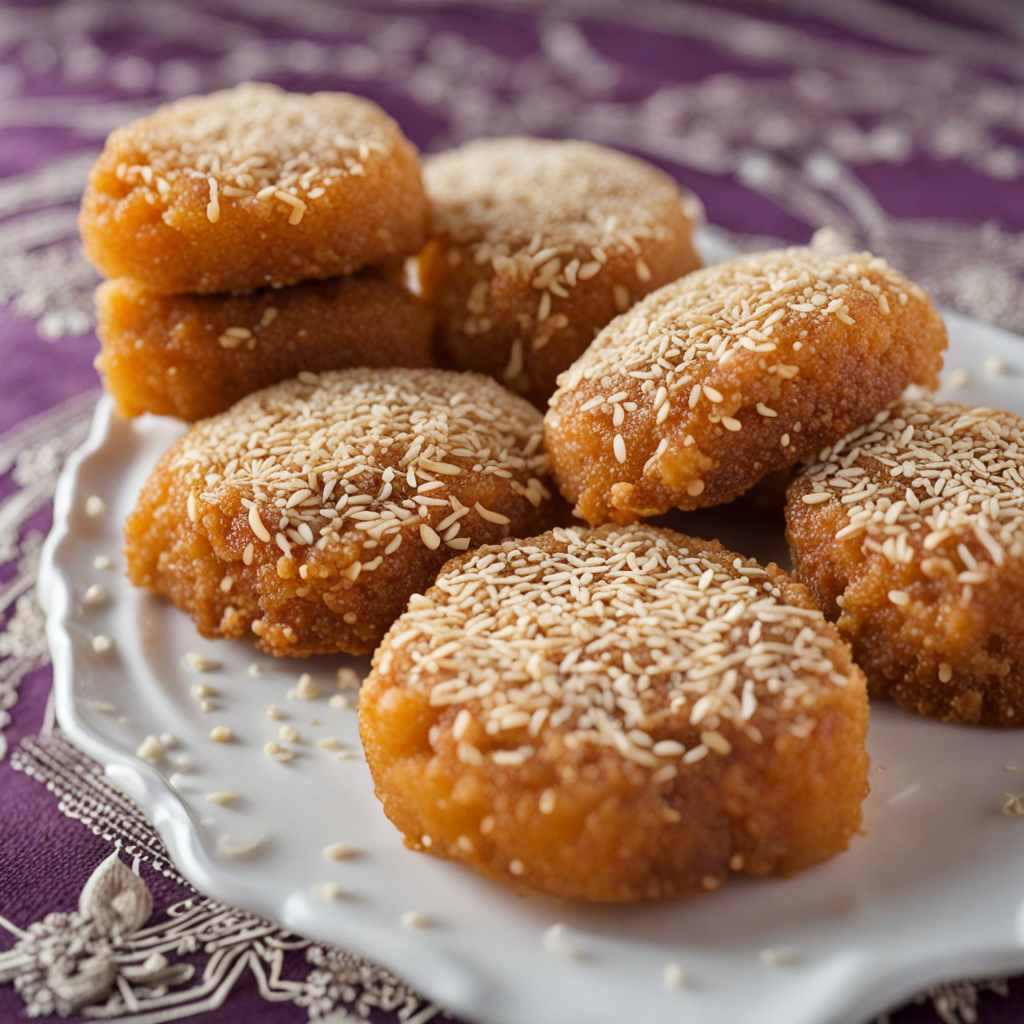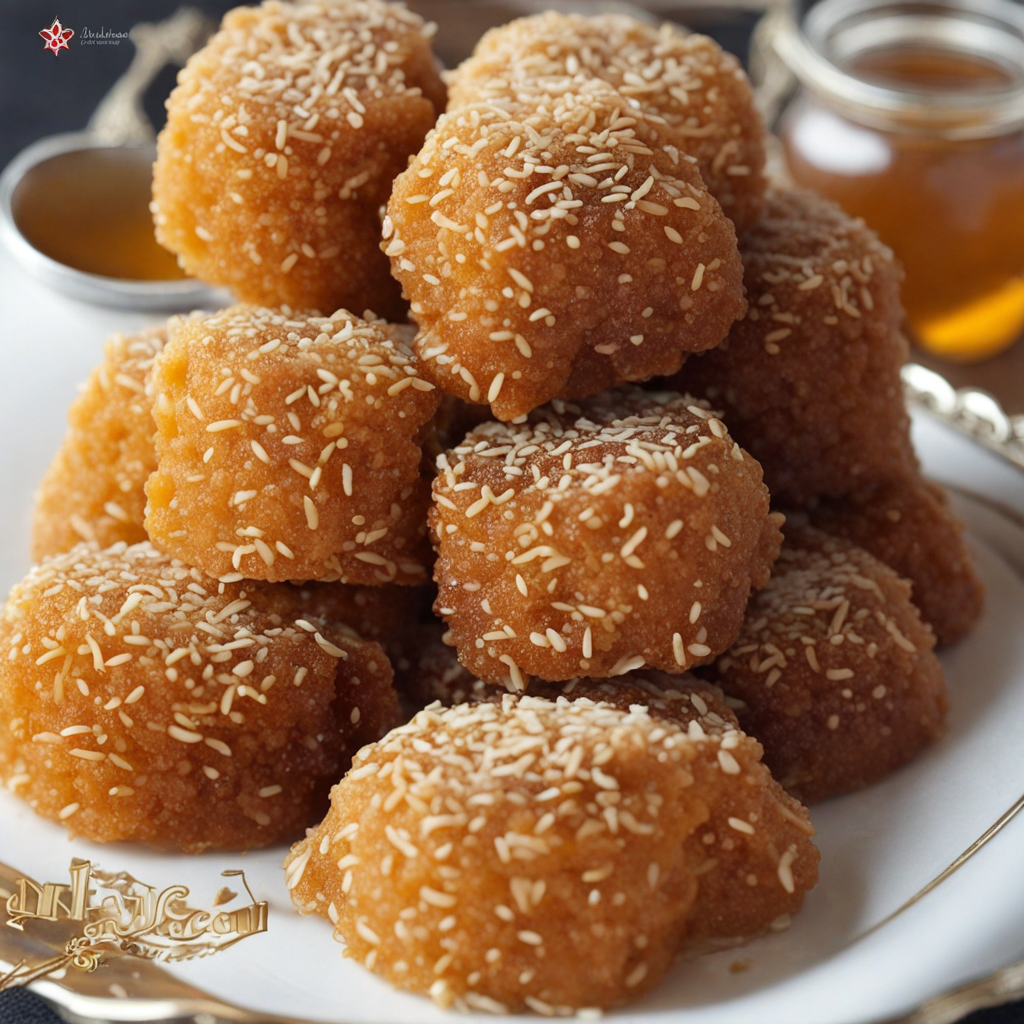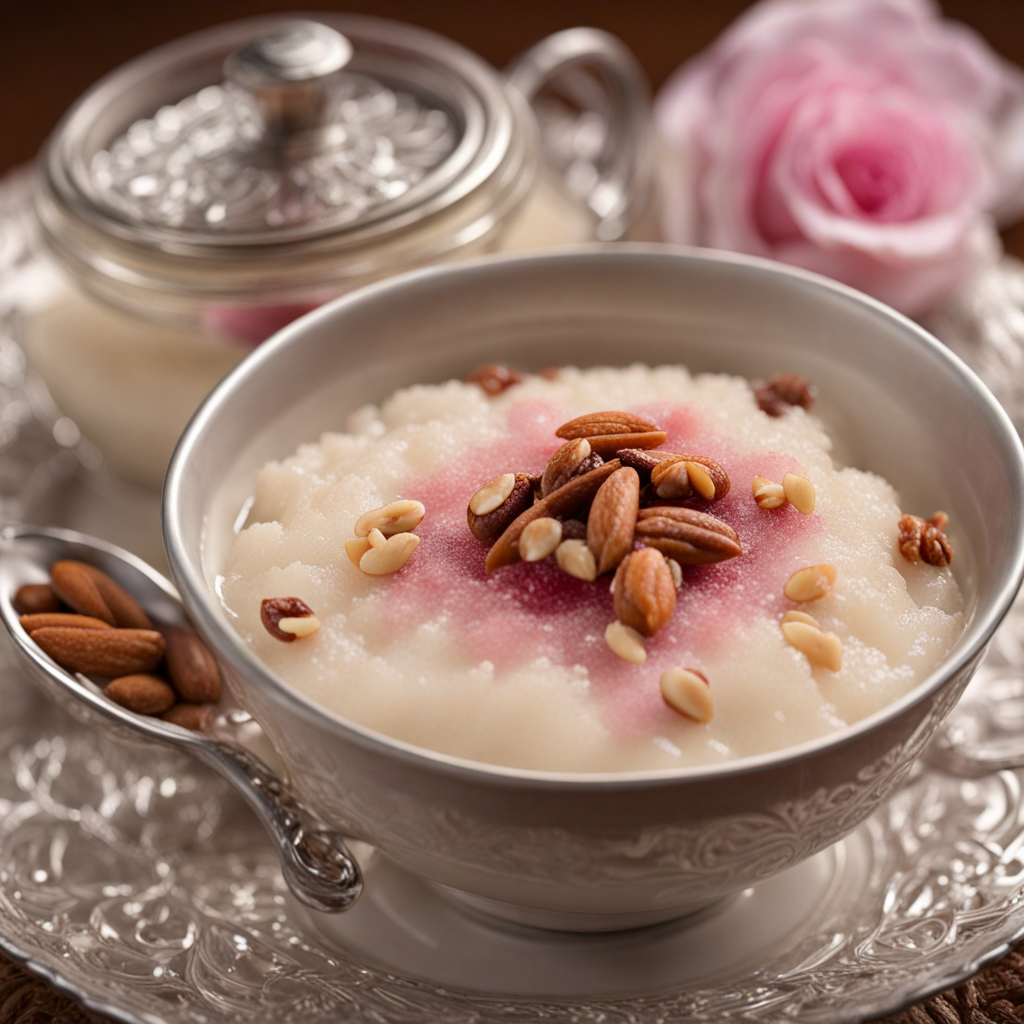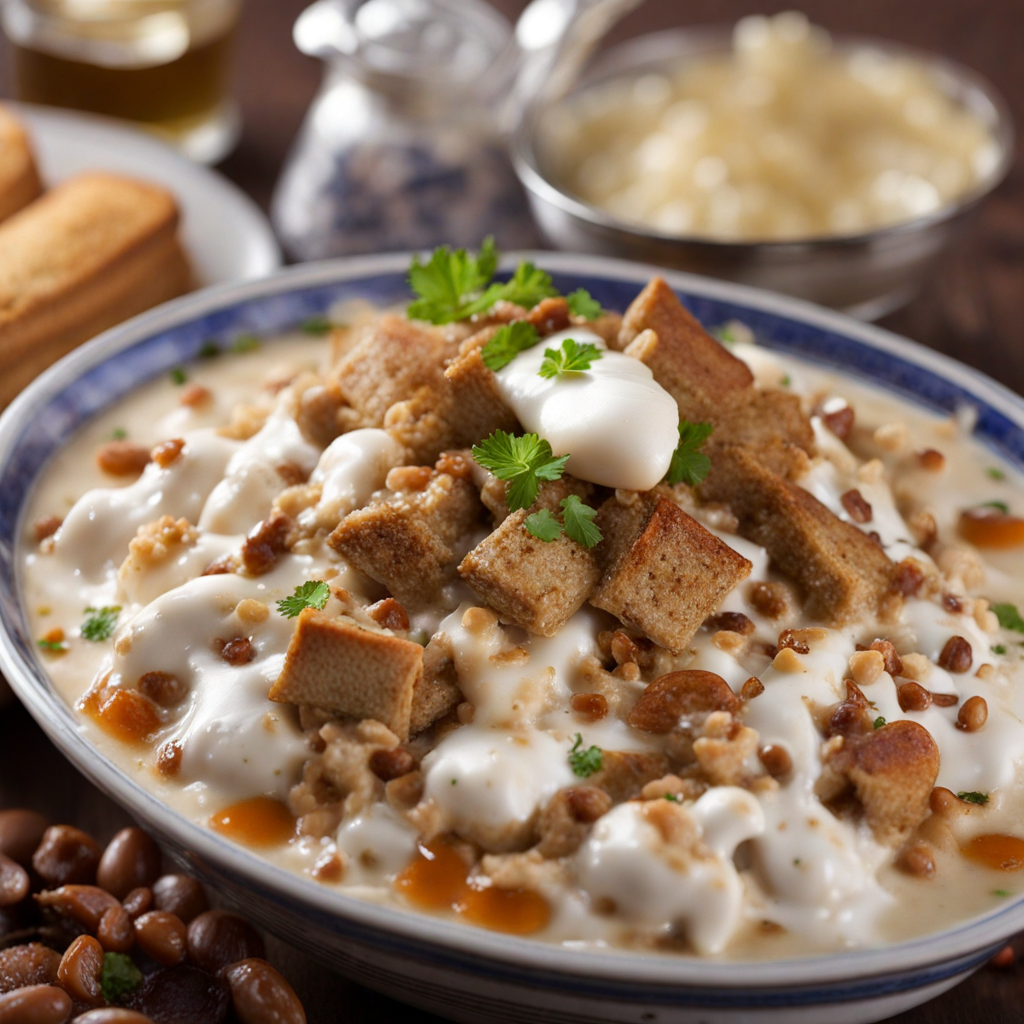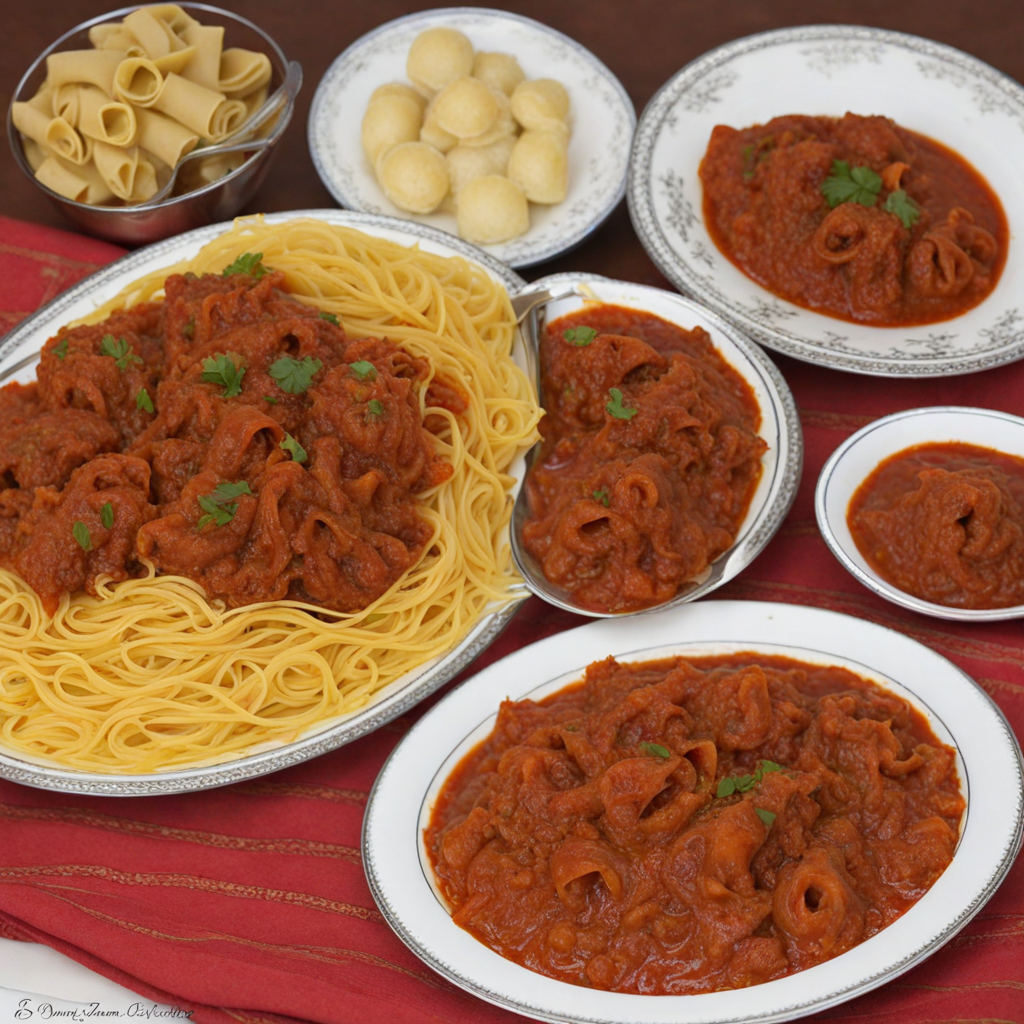Halwa Chebakia
Halwa Chebakia is a delightful Libyan treat that beautifully embodies the rich culinary traditions of the region. This sweet pastry, often enjoyed during special occasions like Ramadan, is characterized by its intricate, flower-like shape. The dough is made from a blend of flour, sesame seeds, and warm spices such as cinnamon and anise, which infuse the pastry with a unique, aromatic flavor. Once shaped, the dough is deep-fried to a golden crisp, creating a satisfying crunch that contrasts with its tender interior. After frying, Halwa Chebakia is generously coated in a warm syrup made from honey, sugar, and orange blossom water. This syrup not only adds a glossy finish to the pastry but also enhances its sweet, floral notes, making each bite a delightful experience. The combination of the crunchy exterior and the sticky, sweet coating results in a treat that is both indulgent and comforting, perfect for satisfying a sweet tooth. Often garnished with sesame seeds, Halwa Chebakia is not just a feast for the taste buds but also for the eyes. Its intricate design and golden hue make it a show-stopping dessert at gatherings. Whether served alongside mint tea or enjoyed as a standalone snack, this Libyan delicacy offers a glimpse into the country's vibrant culture and culinary heritage, making it a must-try for anyone looking to explore new flavors.
How It Became This Dish
The Sweet Legacy of حلوى الشباكية: A Libyan Culinary Gem #### Origins and Historical Context حلوى الشباكية, or "Shebakia," is a traditional sweet that has become synonymous with Libyan culture, particularly during the holy month of Ramadan. This intricate pastry is made from a dough of flour, sesame seeds, and spices, which is then shaped into a delicate, flower-like form, fried until golden, and drenched in honey syrup. The origins of Shebakia can be traced back to the Arab Maghreb region, where the sweet has been enjoyed for centuries, intertwining with the rich tapestry of North African culinary traditions. The name "Shebakia" derives from the Arabic word "شبك," which means "to weave" or "to interlace." This is particularly fitting, as the pastry is characterized by its beautifully intertwined shapes, resembling a delicate lacework. The exact origin of Shebakia is difficult to pinpoint, but it is believed to have been influenced by the culinary practices of the Berbers, Arabs, and even the Ottoman Empire, all of whom have contributed to the region's complex gastronomic heritage. #### Cultural Significance In Libya, Shebakia holds a special place in the hearts of families and communities, especially during Ramadan. The sweet is not just a dessert; it is a symbol of hospitality and celebration. During this holy month, families gather to break their fast with dates, water, and Shebakia, often accompanied by mint tea. The preparation of Shebakia is a communal affair, where families come together to mix the dough, shape the pastries, and fry them, fostering a sense of unity and tradition. Beyond its role in Ramadan, Shebakia also features prominently in weddings, festive occasions, and special gatherings. It is often presented as a gift to guests, showcasing the host's culinary skills and generosity. The sweet's intricate design also reflects the artistry involved in its preparation, elevating it from mere food to a work of art. This cultural significance has solidified Shebakia's status as an emblem of Libyan identity and heritage. #### Ingredients and Preparation Traditionally, Shebakia is made from simple yet flavorful ingredients. The dough typically consists of flour, sesame seeds, anise, and sometimes orange blossom water, which adds a fragrant aroma. The dough is kneaded until it reaches a smooth consistency, then rolled out and cut into thin strips. These strips are skillfully interwoven to create the signature floral shape. After shaping, the pastries are deep-fried until they achieve a perfect golden hue. The final touch involves dipping the fried Shebakia in a warm honey syrup, often spiced with cinnamon and sometimes infused with rose water. This syrup not only sweetens the pastry but also helps to preserve its freshness. #### Development Over Time As Libyan culture has evolved, so too has the recipe and presentation of Shebakia. While the traditional method remains beloved, modern variations and adaptations have emerged, reflecting contemporary tastes and lifestyles. In urban areas, for instance, you may find Shebakia prepared with innovative fillings, such as nuts or chocolate, appealing to younger generations and diversifying the sweet’s flavor profile. The globalization of food culture has also influenced the way Shebakia is perceived and enjoyed. With the rise of social media, the intricate designs of Shebakia have gained international exposure, inviting curious food enthusiasts from around the world to explore Libyan cuisine. This visibility has led to a resurgence of interest in traditional Libyan recipes, as chefs and home cooks alike seek to preserve and adapt their culinary heritage. #### Shebakia Beyond Libya While Shebakia is most closely associated with Libya, variations of this sweet can be found throughout North Africa, particularly in Morocco, where it is also a staple during Ramadan. In Morocco, the pastry is known for its unique shapes and is often served alongside other traditional sweets. The shared culinary traditions across North Africa highlight the interconnectedness of the region’s cultures, as well as the way food serves as a vehicle for social and familial bonds. Moreover, the preparation of Shebakia has crossed borders, with Libyan expatriate communities around the world continuing to make this beloved sweet during Ramadan and other festive occasions. These communities have played a pivotal role in sharing Libyan culinary traditions with broader audiences, introducing Shebakia to new palates and ensuring its place in the global food narrative. #### The Future of حلوى الشباكية As we move further into the 21st century, the future of Shebakia appears promising. The ongoing interest in traditional foods, coupled with a growing appreciation for global cuisines, suggests that this Libyan sweet will continue to thrive. Food festivals, cooking classes, and cultural exchanges are increasingly highlighting Shebakia as a culinary treasure, allowing more people to experience its unique flavors and cultural significance. Furthermore, as the conversation around food sustainability and local ingredients grows, there is potential for Shebakia to adapt to these values. Emphasizing the use of locally sourced ingredients and traditional techniques can ensure that this beloved sweet remains rooted in its cultural heritage while appealing to modern sensibilities. Conclusion حلوى الشباكية is more than just a sweet treat; it is a celebration of Libyan culture, tradition, and community. With its intricate design and rich flavors, Shebakia embodies the spirit of hospitality and the joy of gathering. As it continues to evolve and adapt, this delightful pastry stands as a testament to the resilience of Libyan culinary traditions and the enduring power of food to connect people across generations and cultures. The story of Shebakia is a reflection of Libya itself—a narrative of heritage, innovation, and a shared love for the sweeter things in life.
You may like
Discover local flavors from Libya


